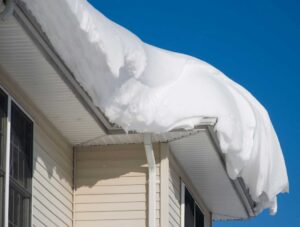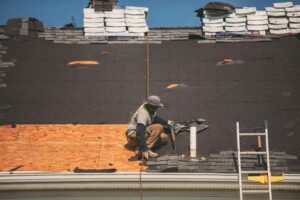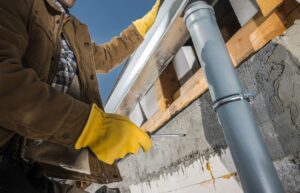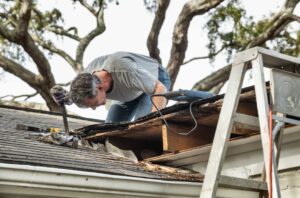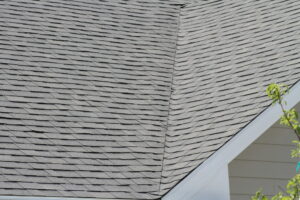What You Don’t See Can Shut You Down This Winter
In Kansas City, the first snow doesn’t just bring in the cold—it brings calls from property managers with water stains on the ceiling and tenants complaining about leaks. The common thread? Missed inspections. No winter roof prep. And a commercial roof maintenance plan that either didn’t exist or was never followed.
Here’s the good news: You can prevent all of that.
At Brewster Roofing, we’ve worked on thousands of commercial roofs—from multifamily buildings to churches and industrial spaces. We’ve seen what happens when flat roofs are ignored, and we’ve seen what happens when they’re maintained properly. The difference? One keeps your doors open. The other leaves you scrambling in the middle of January.
What You’ll Learn in This Post:
- Why Kansas City winters are especially rough on commercial roofs
- What’s included in a smart flat roof maintenance plan
- Steps you can take today to avoid business disruptions
- Which materials handle winter best—and which don’t
- FAQs that clear up common maintenance questions
Want to get ahead of winter? Brewster Roofing can help.
Why Flat Roof Maintenance Is a Business Priority in Kansas City
Let’s get practical. Flat and low-slope roofs aren’t designed to shed snow and ice like pitched residential roofs. Instead, water tends to collect. And in Kansas City’s freeze-thaw cycles, that turns into ponding, cracking, and eventually, leaks.
What Is a Commercial Roof Maintenance Plan?
A commercial roof maintenance plan is a routine schedule of inspections, small repairs, and seasonal checkups designed to:
- Prevent leaks and structural issues
- Catch minor damage before it becomes expensive
- Protect warranties and extend the life of your roof
- Keep businesses operational through extreme weather
Winter is the biggest threat to a commercial roof—and without a plan in place, you’re one storm away from disruption.
What to Know Before You Start Maintenance
You don’t need to be a roofing expert, but there are a few key things you should understand before getting serious about winter roof prep.
Budget Expectations
A maintenance plan is an operating expense, not an emergency one. It’s far more affordable than replacing inventory, relocating tenants, or shutting down a warehouse because of a leak.
Building Type & Code
Commercial roofs across Kansas and Missouri must meet local code requirements, especially for drainage and load-bearing. Different rules may apply for:
- Apartment complexes
- Churches or schools
- Industrial or storage facilities
Roofing Materials Matter
Not all roofs handle winter the same. Brewster Roofing works with:
- Modified Bitumen (great for flat roofs)
- Metal Roofing (durable, sheds snow well)
- Asphalt Shingles (often used on steep-slope commercial structures)
We tailor your commercial roof maintenance plan based on material and age.
Documentation Is Critical
Many manufacturers require ongoing maintenance to keep warranties valid. We provide digital records, photos, and service logs—especially helpful during insurance claims.
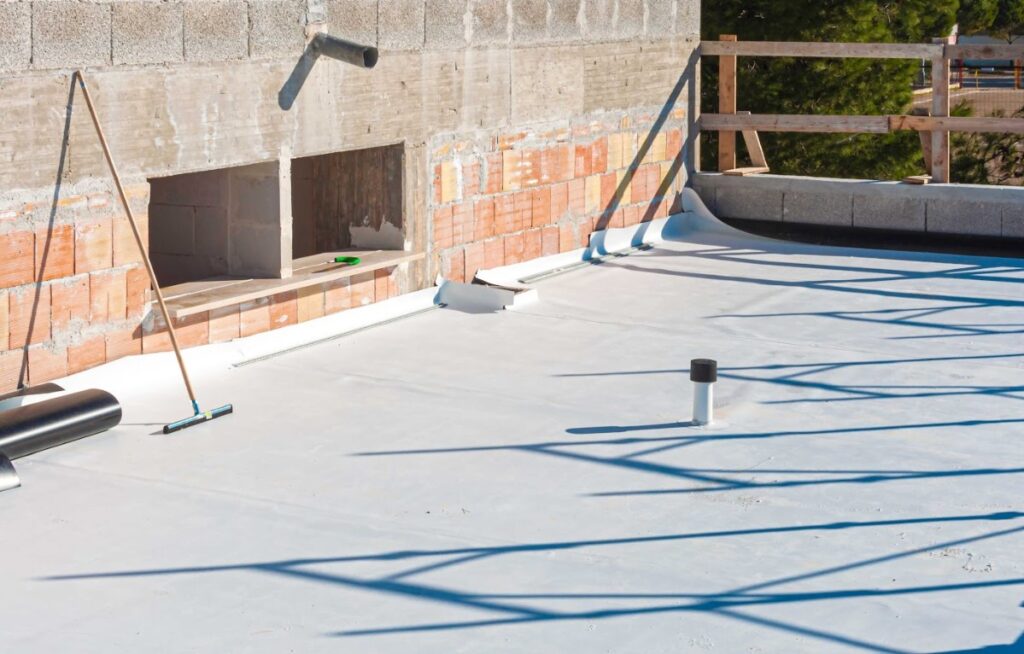
Your Flat Roof Winter Maintenance Checklist
(Structured as a Listicle – SEO-friendly and skimmable)
1. Schedule a Professional Roof Inspection
Your maintenance plan starts here. We recommend getting an inspection before the first hard freeze. Brewster Roofing checks:
- Flashings
- HVAC penetrations
- Drains and scuppers
- Seams and sealants
- Signs of ponding or membrane wear
2. Clear Debris and Inspect Drainage
Leaves, limbs, and dirt block flow, leading to ponding. In winter, ponded water freezes—and that weight stresses the entire structure. We clean drains and assess flow paths to ensure water has somewhere to go.
3. Check Sealants and Fasteners
Sealants crack and shrink in the cold. Fasteners can loosen. Both allow water inside. We reseal joints and secure perimeter areas to reduce vulnerability during storms.
4. Review Snow Load Capacity
Every commercial roof should be evaluated for how much weight it can bear—especially after years of wear. Older structures or those with previous storm damage may need reinforcement or a snow management plan.
5. Document and Repair Vulnerabilities
We don’t just inspect—we document everything and repair minor issues on the spot. Our goal is to prevent emergency calls in January by fixing what we find in October.
Deep Dive: Roof Types, Risk Factors, and How Brewster Roofing Helps
Not all commercial roofs are created equal—especially in winter. Here’s how different systems respond to Kansas City conditions:
| Roof Type | Best Uses | Winter Risks |
| Modified Bitumen | Flat commercial roofs | Seams can crack with freeze-thaw cycles |
| Metal | Churches, storage units | Expansion/contraction can loosen panels |
| Asphalt Shingles | Steep-slope apartments | Ice damming at eaves and valleys |
| Roof Coatings | Budget-friendly refresh | Only effective over solid substrates |
Warranty Coverage
At Brewster Roofing, we offer:
- Up to 50-year manufacturer warranties
- TAMKO MasterShield (30-year non-prorated)
- 5-year workmanship warranties on all jobs
And most importantly, we keep your warranties valid by documenting every inspection, cleaning, and repair.
Commercial Roofing FAQs for Kansas City Property Owners
How often should commercial roofs be maintained?
Commercial roofs should be maintained at least twice a year, typically in the spring and fall. In Kansas City, a pre-winter inspection is especially important to prevent snow and ice damage.
What’s included in a flat roof maintenance plan?
A flat roof maintenance plan includes inspections, drain clearing, sealing flashing, checking fasteners, and repairing minor issues. It’s designed to catch problems before they interrupt operations.
Can winter weather really shut down my business?
Yes, winter weather can shut down your business if roof damage leads to leaks or structural issues. Ice dams, heavy snow loads, and freeze-thaw cycles are major threats to flat roofs in this region.
Do I need to maintain my roof even if it’s under warranty?
Yes, you still need to maintain your roof even if it’s under warranty. Most manufacturers require documented upkeep to honor claims. Brewster Roofing provides all documentation needed.
How do I know if my flat roof is ready for winter?
You’ll know your flat roof is ready for winter after a professional inspection and needed repairs. If your drains are clear, flashings are sealed, and ponding is managed, you’re in good shape.
Is it too late to start winter roof prep in December?
It’s not too late to start winter roof prep in December—but it’s cutting it close. Schedule an inspection ASAP and address any red flags before the next storm rolls in.
Final Thoughts: Don’t Let Winter Be the Season Your Roof Fails
Winter downtime costs more than most business owners realize—lost productivity, frustrated tenants, damaged assets. All of it is avoidable with a proactive, strategic commercial roof maintenance plan.
At Brewster Roofing, we don’t just patch problems. We help you plan for long-term durability. With over 60 years in business and certifications from TAMKO, GAF, and Owens Corning, we’re the roofing partner commercial property owners across the region rely on—especially when the stakes are high.
Schedule your free inspection today, and let’s get your flat roof ready for winter before downtime becomes your reality.

